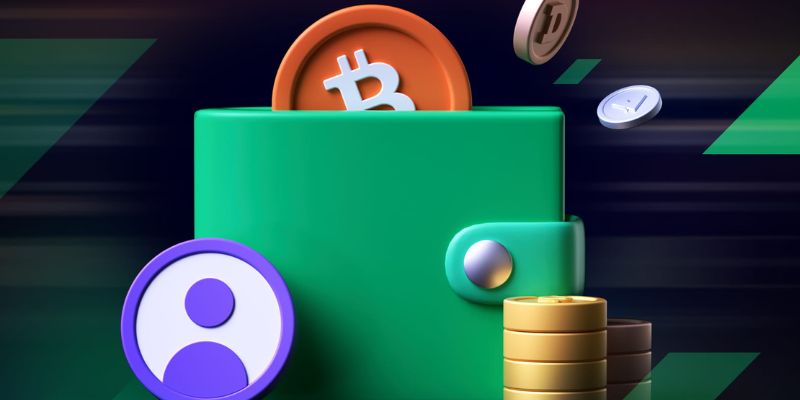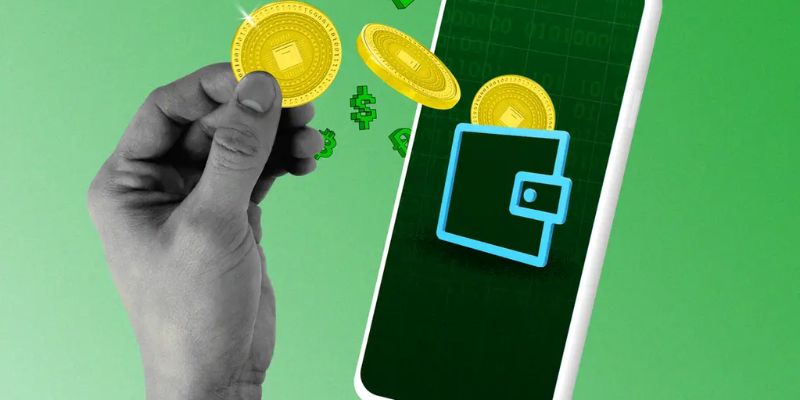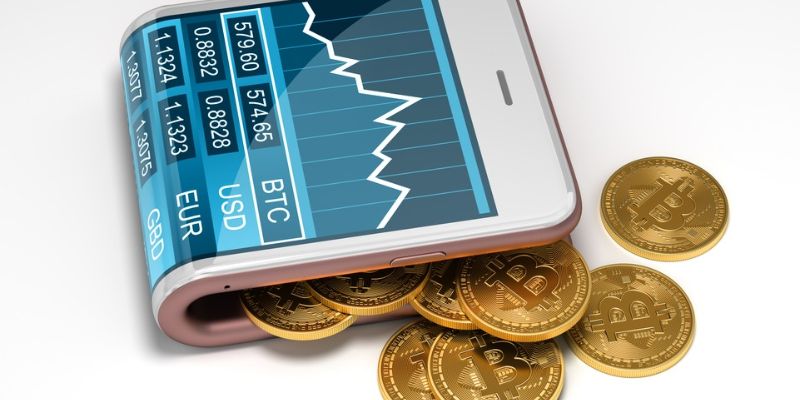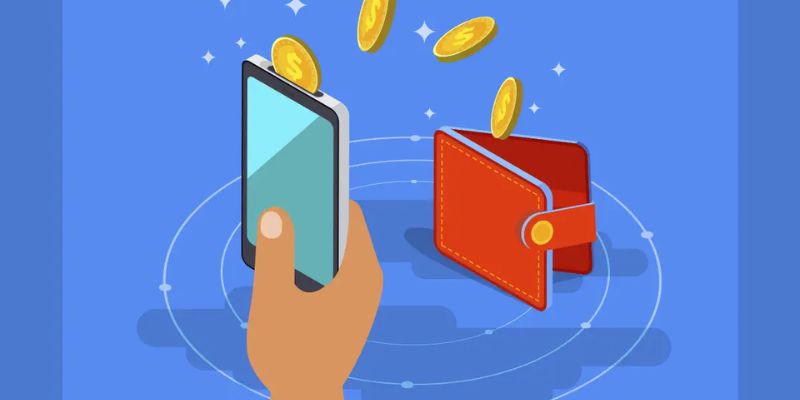How to secure a crypto wallet for beginners? It’s simpler than you think! Don’t let the worry of tech mishaps or online thieves keep you from stepping into the world of digital currencies. I’m here to guide you through the essentials of crypto wallet safety. From grasping why security can’t be ignored, to choosing a wallet that fits your needs, I’ve got your back. Stick with me, and you’ll learn foolproof methods to protect your digital treasure.
Understanding the Fundamentals of Crypto Wallet Security
What is a Crypto Wallet and Why Security Matters
A crypto wallet keeps your digital money safe, kind of like a real wallet does for cash. Say you have a digital dollar – you need a place to put it, right? That’s your crypto wallet. But online thieves want to steal it. Just like you wouldn’t leave your real wallet lying around, you must keep your crypto wallet safe. Why? If hackers get in, they can take all your digital dollars. Now hear this: no one can get your stolen crypto back. This is why securing your digital currency matters a lot.
Types of Crypto Wallets and Their Security Features
You’ve got a few wallet types to choose from, each with their own ways to keep your digital money safe. Let me break it down for you.
Software wallets are like apps on your phone or computer. They are handy but face risks because they’re connected to the Internet. Always use a strong password and two-factor authentication (2FA) here. 2FA adds another check to make sure it’s really you.
Hardware wallets look like USB drives and keep your crypto offline which is super safe. Thieves can’t attack what they can’t reach over the internet. Use these for savings or big amounts of digital cash.
Paper wallets are printouts with your crypto info on them. Old school but quite safe if kept in a secure place. No internet, no hacking. Simple.
Mobile wallets are on your phone. Great for spending but watch out – phones can be lost or hacked. Secure your phone with a PIN and never use public Wi-Fi when doing crypto stuff.
No matter the type, every wallet has a set of private keys – these are the secret codes that prove the money is yours. Protect these keys like treasure. If someone steals them, they can take all your digital coins. Use encryption to scramble the keys so only you can read them.
Backups are key too. If your wallet goes bye-bye, backups help you get your crypto back. Make a copy of your keys and store it safe, like in a locked drawer or even a bank safe.
Remember, phishing scams are out there. They trick you into giving your info away. Never tell anyone your keys or password. When in doubt, think “Would I give a stranger my house key?” If it’s no for your house key, it’s no for your wallet keys too.
Always go with trusted wallet providers. Sure, new ones pop up all the time, but stick to the ones that have good reviews and have been around the block. Keep your wallet software up to date too, just like you update your phone.
I’ll cap it off with this: whether you choose a leather wallet or a digital one, security is a must. Take it step by step, use the tips I shared, and you’ll be one step ahead of the bad guys. Keep your digital dollars safe, and your crypto life will be as smooth as silk.
Comprehensive Safeguarding Techniques for Your Digital Assets
Implementing Encryption and Multi-Factor Authentication
To keep your cryptocurrency safe, think like a bank vault. Start with strong encryption. This is like a secret code that locks up your digital money. It’s a must-have for any crypto wallet. Add multi-factor authentication (MFA) to this. This means you’ll need more than one key to get in. It’s like needing a key and a secret code to unlock a door. It’s one of the top ways to protect your coins.
For encryption, think of it as your wallet’s armor. It turns your sensitive details into a puzzle. Only the right key can solve it, keeping hackers out. Now, where to set this up? Look for “security settings” when you’re inside your wallet app or on its website.
MFA is your double-check. It asks for extra proofs like a text with a code, or even your fingerprint, after your password. It stops thieves cold. They might guess a password, but can’t fake your fingerprint! You can often turn this on in the same place you found your encryption settings.
The Role of Private Keys and Secure Backup Procedures
Your wallet’s private key is like a master key. If someone gets it, they can take your coins. That’s why you keep it secret and safe. Never share your private key, and don’t keep it online where hackers can find it. Think of it as the most important treasure map, leading straight to your wealth.
Backing up your wallet is like copying your treasure map. If you lose the first one, you have another. You use backup to save your wallet info somewhere secure. This could be on a USB drive, a piece of paper, or even a safe. It ensures you can always find your digital treasures, even if something happens to your computer or phone.
Remember, backing up is more than copying your key. You need to save all the info to restore your wallet. This is like having the full map, not just an ‘X’ marks the spot. Follow your wallet provider’s steps to back up the right way. And update your backup if your wallet info ever changes.
Stick to these rules, and your digital assets stand strong against thieves and accidents. It’s all about keeping your secrets hidden and having backup plans. Like a squirrel with nuts, spread your backups around. Just keep track of where you put them.
Stay sharp and use these tips to make sure your crypto journey is safe and happy. Remember, the right protection can turn a risky trek into a walk in the park.
Navigating Threats: Preventing Theft and Phishing
Identifying and Avoiding Common Crypto Scams
Crypto scams are all too common. These cons trick you out of cash. They may pose as fake investments or use phishing to swipe your info. Stay alert and be critical. If it sounds too good to be true, it might just be a scam. Trustworthy deals won’t pressure you. They give you time to think and check facts. Always cross-check the source and look out for odd asks, like payments out of the blue.
Best Practices for Phishing Protection and Avoiding Unsafe Connections
Did you know phishing can strip away your digital wealth? Here’s how to protect yourself. Learn what phishing looks like. Usually, it’s emails or sites that seem legit but aren’t. They want your keys – the passwords to your crypto riches.
Keep your keys secret and safe – never share them, not even a little bit. Second, add layers of guards. This means two-factor authentication: a second check when you sign in. Also, go for multi-factor authentication if you can – even tighter security.
Make backups sure as sunrise. Use different spots for storing them. Paper or USB backups, kept in a locked-away spot, could save your day. We list using a safe. And never say your passphrase out loud or to anyone. The eyes only, folks.
Using the internet? Always choose a network that’s secured. Public Wi-Fi, like cafes or airports, can be risky. Your sensitive deals may be seen by others on the same Wi-Fi. Better to wait and do your crypto stuff at home.
When it comes to updating wallet software, think of it like a health check. Regular updates keep your wallet at its safest. Old versions may have cracks that let thieves slip through. Updated software is like a strong, patched-up fortress.
And here’s gold: avoid using the same password elsewhere. Your wallet’s passphrase should be one-of-a-kind. This means strong and not repeated across other sites or apps. Using the same one all over is like having one key for every lock. One key lost, and everything could go poof.
Remember, in the crypto world, your know-how is your best weapon. The more you know, the safer your digital gold stays. Keep up with how crypto works. Learn the signs of a scam. Build strong walls of protection around your wallet.
Bit by bit, it adds up. Your knowledge, your caution, and these best practices – it’s how you keep what’s yours, well, yours.
Advanced Protection Strategies and Regular Maintenance
Harnessing the Benefits of Hardware Wallets and Cold Storage
To keep your crypto safe, think about using a hardware wallet. This tool works like a USB but it’s for your digital cash. It keeps your crypto offline which makes it tough for thieves to get. We call this “cold storage”, and it’s like a safe for your digital coins.
When you choose a hardware wallet, you’re picking a safe spot that hackers can’t easily touch. It’s a physical object that holds your private keys. Remember, private keys are like the secret codes that unlock your coins. With these keys safe, your crypto stays secure.
In a nutshell, a hardware wallet stops theft because it’s not on the net. Hackers love the internet, so when your wallet’s offline, it’s off their radar. Plus, if something goes wrong online, your money is still snug and protected. Just make sure your wallet is from a trusted wallet provider. They make sure it’s built tough to keep hackers out.
Using a hardware wallet is pretty simple, too. You plug it into a computer, move your crypto onto it, and then unplug. That’s it—your coins are kept offline but you can check them when you plug back in. For extra safety, you should also set up a PIN. No one can get into your wallet without it, making your coins even safer.
The Importance of Regular Software Updates and Audits
Think of software updates as a health check for your wallet. They fix bugs and close security gaps. Always keep your wallet’s software current. Just like apps on your phone, when your wallet has the latest update, it’s harder for bad guys to break in.
Regularly updating your wallet software means it’s armed with the newest safety features. Each update adds stronger walls against any attacks. If you’re using an online wallet, these updates are vital. Online wallets can be at risk since they’re connected to the net. Regular updates keep them tough against hackers.
Now, what about checking your security? That’s where audits come in. An audit is like a detective going through everything to find any weak spots. They check your wallet’s defenses and tell you what to fix. You can find help by looking for crypto audit services. They know what to look for and can show you how to make your wallet a fortress.
To sum up, securing your crypto requires both strong gadgets and sharp habits. Use hardware wallets for top-notch safety and always update your software. Don’t forget to do some check-ups with audits. Following these steps can help shield your treasure in the wild world of crypto. Keep learning, stay sharp, and your digital assets will thank you for it.
In this post, we’ve explored how vital crypto wallet security is. We’ve seen that whether it’s basic wallets or ones with more features, keeping them safe matters a lot. We dug deep into making sure your digital money stays yours with strong encryption and multi-layered checks like multi-factor authentication.
We tackled scary stuff like theft and phishing. I showed you how to spot sneaky scams, use smart web habits, and make sure connections are safe. Lastly, we stepped up our game with some pro tips: using hardware wallets and keeping everything up-to-date and checked. Remember, safety is a daily task, not a one-time fix. Look after your keys, back everything up securely, and you’re set.
Keep your crypto locked tight, update often, and stay sharp out there. Got it? Good. Now go keep your digital treasure safe!
Q&A :
What are the first steps to securing a cryptocurrency wallet for beginners?
Securing a cryptocurrency wallet begins with understanding the different types of wallets available, such as hardware, software, and paper wallets. Beginners should first choose a reputable wallet provider and ensure that they use a strong, unique password for their wallet. Additionally, it’s fundamental to enable two-factor authentication (2FA) and keep the software or firmware of the wallet updated.
How can one protect their crypto wallet from hackers?
To protect your crypto wallet from hackers, practice the following security measures: never share your private keys or seed phrases with anyone, use a hardware wallet for extra security, enable all available security features like two-factor authentication, and remain cautious of phishing attempts. Additionally, be sure to use secure and private internet connections when accessing your crypto wallet.
What backup methods should a beginner use for their crypto wallet?
Beginners should have a secure backup system for their crypto wallet to ensure access to their assets in case of device failure or other issues. Writing down the wallet’s seed phrase or private key and storing it in a secure, offline location, such as a safe deposit box, is crucial. It’s also beneficial to make multiple backups and to consider using a metal backup solution to protect against physical damage.
Why is two-factor authentication important for crypto wallet security?
Two-factor authentication (2FA) adds an additional layer of security beyond just a username and password. It usually requires a user to confirm their identity with a second factor, such as a fingerprint, a text code, or an authentication app notification. This makes unauthorized access to your crypto wallet significantly more difficult for potential intruders, thereby safeguarding your digital assets.
Can beginners use hardware wallets, and are they more secure?
Yes, beginners can use hardware wallets, and they are often recommended due to their enhanced security features. Hardware wallets, also known as cold wallets, store private keys offline, making them less susceptible to online hacking attempts. While hardware wallets are considered more secure, it’s still important for beginners to understand how to set up and use these devices properly to maintain their security benefits.


